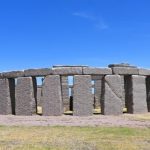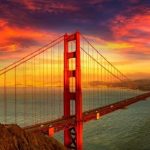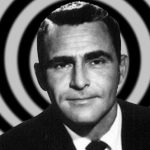 Technology
Technology  Technology
Technology  Humans
Humans 10 Everyday Human Behaviors That Are Actually Survival Instincts
 Animals
Animals 10 Animals That Humiliated and Harmed Historical Leaders
 History
History 10 Most Influential Protests in Modern History
 Creepy
Creepy 10 More Representations of Death from Myth, Legend, and Folktale
 Technology
Technology 10 Scientific Breakthroughs of 2025 That’ll Change Everything
 Our World
Our World 10 Ways Icelandic Culture Makes Other Countries Look Boring
 Misconceptions
Misconceptions 10 Common Misconceptions About the Victorian Era
 Mysteries
Mysteries 10 Strange Unexplained Mysteries of 2025
 Miscellaneous
Miscellaneous 10 of History’s Most Bell-Ringing Finishing Moves
 Technology
Technology Top 10 Everyday Tech Buzzwords That Hide a Darker Past
 Humans
Humans 10 Everyday Human Behaviors That Are Actually Survival Instincts
 Animals
Animals 10 Animals That Humiliated and Harmed Historical Leaders
Who's Behind Listverse?

Jamie Frater
Head Editor
Jamie founded Listverse due to an insatiable desire to share fascinating, obscure, and bizarre facts. He has been a guest speaker on numerous national radio and television stations and is a five time published author.
More About Us History
History 10 Most Influential Protests in Modern History
 Creepy
Creepy 10 More Representations of Death from Myth, Legend, and Folktale
 Technology
Technology 10 Scientific Breakthroughs of 2025 That’ll Change Everything
 Our World
Our World 10 Ways Icelandic Culture Makes Other Countries Look Boring
 Misconceptions
Misconceptions 10 Common Misconceptions About the Victorian Era
 Mysteries
Mysteries 10 Strange Unexplained Mysteries of 2025
 Miscellaneous
Miscellaneous 10 of History’s Most Bell-Ringing Finishing Moves
10 Iconic Landmarks That Were Nearly Called Something Else
Some of the world’s most iconic places have instantly recognizable names—imagine Paris without the Eiffel Tower, New York without Times Square, or Australia without the Great Barrier Reef. But history doesn’t always work out the way we expect. Many of these landmarks were nearly given completely different names, some of which would have changed how we think about them today. Whether due to government debates, public contests, or last-minute decisions, these 10 famous places were almost called something else entirely.
Related: Top 10 Greatest Archaeological Restorations
10 The Eiffel Tower Was Almost Called the 300-Meter Tower
When Gustave Eiffel proposed his massive iron structure for the 1889 World’s Fair in Paris, it wasn’t originally meant to bear his name. Instead, it was simply referred to as “La Tour de 300 Mètres” (The 300-Meter Tower), which was more of a technical description than a true landmark name. The design, created by engineers Maurice Koechlin and Émile Nouguier, was initially met with ridicule, as many Parisians and critics found the structure hideous and unnecessary. Leading artists and intellectuals even signed “The Protest Against the Tower of Monsieur Eiffel,” calling it an eyesore that would ruin the city’s aesthetic. Despite the backlash, Eiffel believed in the project, investing much of his own fortune to ensure its completion.
Eiffel’s deep involvement in securing funding, lobbying for the project, and overseeing construction led to people associating the tower with his name. By the time the fair opened, public opinion began to shift as visitors marveled at the structure’s engineering brilliance. The name “Eiffel Tower” gradually replaced the more generic “300-Meter Tower.” Within a few years, it became one of the most recognizable landmarks in the world. Had the original name stuck, it might have remained a technical curiosity rather than a symbol of French identity.[1]
9 The Hollywood Sign Was Almost Hollywoodland
The world-famous Hollywood Sign wasn’t originally built as a symbol of the film industry. In fact, when it was erected in 1923, it read “HOLLYWOODLAND.” It was merely a giant real estate advertisement for a housing development in the hills above Los Angeles. The letters were 50 feet (15 meters) tall, illuminated by 4,000 light bulbs, and only meant to last a year and a half before being taken down. At the time, Hollywood itself was still transitioning into the world’s entertainment capital, and the sign had nothing to do with the booming film industry.
However, as Hollywood became synonymous with glitz, glamour, and cinema, the sign evolved into a symbol of the industry itself. By the late 1940s, the sign had fallen into disrepair, with some of its letters collapsing. Instead of removing it, the Hollywood Chamber of Commerce saw an opportunity to cement its importance and repaired the sign, but it dropped the “LAND” portion to make it more universal and permanent. If they had kept the original “Hollywoodland” name, it might have remained a forgotten relic of an old real estate scheme rather than the world-famous icon of show business it is today.[2]
8 Times Square Was Almost Longacre Square
Before becoming the neon-soaked center of New York’s entertainment industry, Times Square was known as Longacre Square, a name derived from London’s Long Acre, a street historically associated with horse carriage manufacturing. In the late 19th century, Longacre Square was far from glamorous, filled with factories, horse stables, and rundown buildings. It wasn’t even a significant commercial hub yet, as Broadway theaters had not fully established themselves in the area.
Everything changed in 1904 when the New York Times decided to move its headquarters to the newly built Times Building, which would later become the iconic One Times Square. Seeing an opportunity to modernize the district and boost its prestige, city officials agreed to rename the area “Times Square” in honor of the newspaper. Within a few decades, the name became inseparable from Broadway, advertising, and New Year’s Eve celebrations. If it had remained Longacre Square, it might never have developed into one of the world’s most visited and recognizable locations.[3]
7 The Sydney Opera House Was Almost the Bennelong Point Opera House
The Sydney Opera House is one of the most recognizable structures in the world. Still, before its now-famous name was chosen, it was almost called the Bennelong Point Opera House. The site where the Opera House stands was originally known as Bennelong Point, named after Woollarawarre Bennelong, a prominent Indigenous Australian leader who acted as an intermediary between Aboriginal people and British settlers in the late 18th century. The original naming proposal was meant to honor this historical figure and recognize the Aboriginal significance of the land.
While this would have been a significant nod to Indigenous history, some officials worried that the name wasn’t internationally recognizable enough to reflect the grand architectural ambitions of the structure. Government planners ultimately chose Sydney Opera House, a name that emphasized its role as a national and global performing arts venue rather than tying it to a single historical figure. If it had been named Bennelong Point Opera House, it might have been viewed as a more localized landmark rather than an international icon.[4]
6 The White House Was Almost the Executive Mansion
For much of its early history, the White House was not officially called that at all. Instead, it was referred to as the “Executive Mansion,” a name that made it sound more like a bureaucratic office than the residence of the most powerful leader in the country. Other names considered included the President’s House and the Presidential Palace, both of which leaned too close to European monarchies—something the young American republic was eager to avoid. Despite this, the term “Executive Mansion” remained the formal designation throughout the 1800s.
The name “White House” had already been informally used by the public, largely because of the building’s striking white-painted facade. Still, it wasn’t until 1901 that President Theodore Roosevelt made it official. Wanting to simplify the name and give it a title that resonated more with Americans, he issued an executive order declaring that the building would be known simply as the White House. If “Executive Mansion” had remained, it might have felt far less iconic and lacked the symbolic weight that it carries today.[5]
5 The Grand Canyon Was Almost the Big Canyon
One of the world’s most awe-inspiring natural wonders nearly had a shockingly dull name. Before John Wesley Powell, the first American explorer to navigate the canyon by boat, named it the Grand Canyon in the late 1860s, early settlers and explorers called it “The Big Canyon.” While technically accurate, the name failed to capture the immensity, depth, and breathtaking beauty of one of nature’s most remarkable formations. Some early Spanish explorers even referred to it as “El Cañón Grande,” which translates to the same uninspired name.
Powell, recognizing the need for a grander title, popularized the name Grand Canyon, which evoked majesty, scale, and historical significance. The shift in branding played a huge role in making the site a symbol of American natural beauty, ultimately leading to its designation as a national park in 1919. If it had remained “Big Canyon,” it might have sounded like just another generic geological formation instead of one of Earth’s most visited and admired landscapes.[6]
4 The Statue of Liberty Was Almost Liberty Enlightening the World
When France gifted the United States the now-iconic Statue of Liberty in 1886, it wasn’t originally called the Statue of Liberty at all. Its full official name was “Liberty Enlightening the World” (La Liberté éclairant le monde), as chosen by its sculptor, Frédéric Auguste Bartholdi. The title was meant to symbolize the statue’s role as a beacon of freedom, not just for Americans but for all nations. However, despite its grand philosophical meaning, the name was considered too long and clunky for everyday use.
As the statue became a symbol of American democracy and immigration, people naturally began shortening the name in conversation. Over time, “Statue of Liberty” became the default title, which was much easier to say and more powerful in its simplicity. If it had remained Liberty Enlightening the World, it might not have been as instantly recognizable, making it harder for it to become the enduring icon of freedom it is today.[7]
3 Mount Rushmore Was Almost the Six Grandfathers
Before it became a monument to U.S. presidents, Mount Rushmore was known by the Lakota Sioux people as “The Six Grandfathers”—a sacred mountain representing the six spiritual guiding forces of life: the four directions, the sky, and the Earth. The site was deeply important to the Lakota, and its name reflected their spiritual and cultural beliefs. However, after the U.S. government seized the Black Hills in 1877, the land was renamed and repurposed for what would become the massive presidential carvings.
The name “Mount Rushmore” itself was not deliberately chosen through an official process. Instead, in the 1880s, a visiting lawyer named Charles E. Rushmore casually asked about the mountain’s name, and a local guide offhandedly replied, “It’s Mount Rushmore now.” The name stuck, and by the time sculptor Gutzon Borglum began carving the presidential faces into the rock in the 1920s, the name had become permanent. If it had remained the Six Grandfathers, it might have been spared from being reshaped into a national monument, preserving its original spiritual significance.[8]
2 The Empire State Building Was Almost the Reynolds Building
New York’s Empire State Building, one of the most famous skyscrapers in the world, was nearly named after one of its lead financiers, John J. Reynolds. Early investors considered calling it “The Reynolds Building,” following a common trend of naming skyscrapers after their benefactors—much like the Chrysler Building and Woolworth Building. While this might have been a reasonable choice, it would have stripped the tower of its grand, almost mythical identity.
The decision to name it after New York’s nickname, “The Empire State,” instantly gave it a monumental, larger-than-life quality that made it synonymous with ambition, progress, and American ingenuity. The name played a huge role in establishing the building’s legendary status, making it not just an office tower but a symbol of New York itself. If it had been called the Reynolds Building, it might have faded into history as just another corporate structure rather than one of the most iconic skyscrapers ever built.[9]
1 The Moon Was Almost Called Luna
It may sound strange, but Earth’s only natural satellite was almost officially referred to by its Latin name, “Luna.” Throughout early scientific history, astronomers typically called it Luna (Latin) or Selene (Greek), following the naming conventions of other celestial bodies. Since all the other planets’ moons eventually received unique names, many believed that our own Moon should have an official title rather than just being called… well, “the Moon.”
However, as English became the dominant scientific language, “Moon” simply stuck. While “Luna” is still used in some languages and scientific contexts, it never became the formal name in everyday usage. If “Luna” had been the official name, it would have aligned Earth’s moon with the rest of the solar system’s satellites. However, it also might have made it feel less unique and special to human culture.[10]








